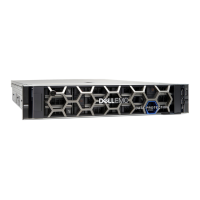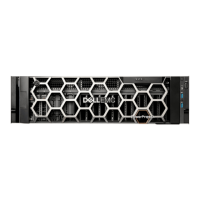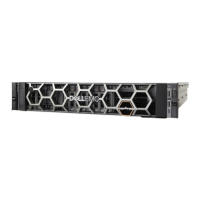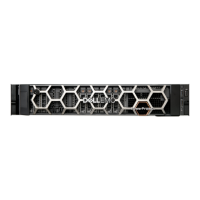When you format a hard drive, allow enough time for the formatting to complete. Be aware that
high-capacity hard drives can take a long time to format.
Identify a faulted hard drive
Use the following information to identify a faulted hard drive:
l
At the front of the system, check the left control panel Drive indicator
as described in
Status LED indicators on page 13.
l
On the hard drive, check the status indicator as described in #unique_24
Status LED indicators
Note: The status LED indicators are always off and only turn on to a solid amber if any error
occurs.
Table 3 Status LED indicators and descriptions
Icon Description Condition Corrective action
Drive indicator The indicator turns
solid amber if there is
a drive error.
l
Check the System Event Log to
determine if the drive has an error.
l
Run the appropriate Online
Diagnostics test. Restart the
system and run embedded
diagnostics (ePSA).
l
If the drives are configured in a
RAID array, restart the system, and
enter the host adapter
configuration utility program.
Temperature
indicator
The indicator turns
solid amber if the
system experiences a
thermal error (for
example, the ambient
temperature is out of
range or there is a fan
failure).
Ensure that none of the following
conditions exist:
l
A cooling fan has been removed or
has failed.
l
System cover, air shroud, memory
module blank, or back filler bracket
is removed.
l
Ambient temperature is too high.
l
External airflow is obstructed.
Electrical
indicator
The indicator turns
solid amber if the
system experiences
an electrical error (for
example, voltage out
of range, or a failed
power supply unit
(PSU) or voltage
regulator).
Check the System Event Log or system
messages for the specific issue. If it is
due to a problem with the PSU, check
the LED on the PSU. Reseat the PSU.
Remove and replace assemblies
Dell EMC Integrated Data Protection Appliance DP4400 Service Procedures 19

